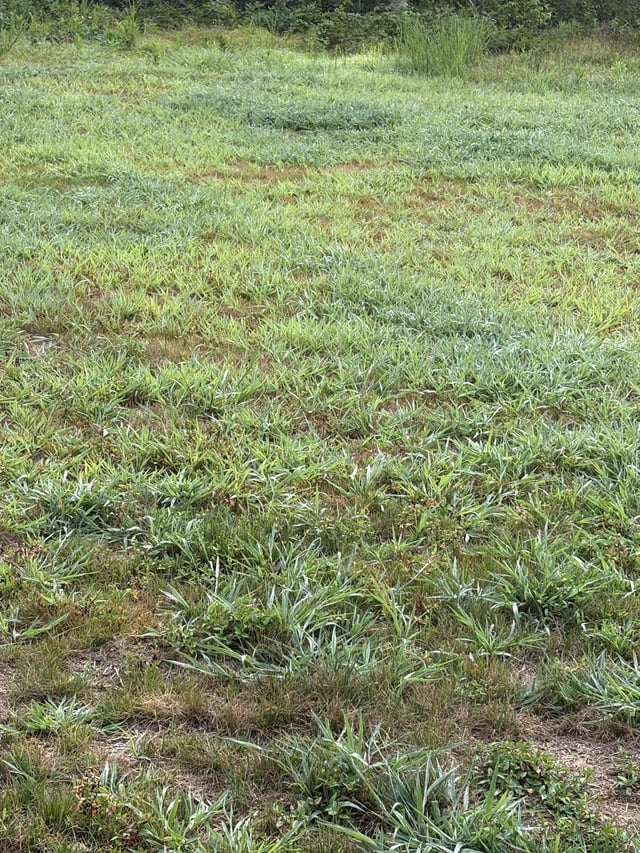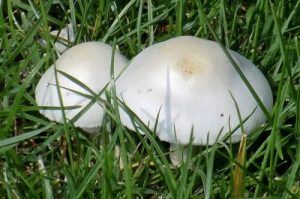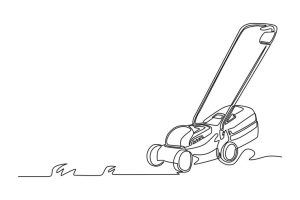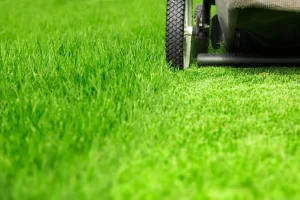Imagine stepping out into your yard, feeling the lush, green grass beneath your feet, and knowing it’s all yours. But wait, those pesky weeds are still there, threatening your perfect lawn dream.
You’ve heard about overseeding and its magical promise of thicker grass, but does it really tackle those stubborn weeds? You’re not alone in this quest for the ultimate weed-free yard. Many homeowners like you are searching for effective solutions that don’t involve endless hours of weeding or harmful chemicals.
By the end of this article, you’ll discover whether overseeding is the secret weapon you need to finally conquer those weeds and achieve the lawn of your dreams. Ready to transform your yard into a green paradise? Keep reading to find out how overseeding might be the answer you’ve been looking for.
Understanding Overseeding
Overseeding helps grass grow thick, reducing space for weeds to thrive. Healthy lawns from overseeding naturally crowd out weeds. It’s a simple way to improve your lawn’s appearance and health.
Understanding overseeding is crucial for a healthy, lush lawn. Overseeding involves spreading new grass seed over existing turf. It helps improve grass density and fill in bare spots. This process promotes a vibrant lawn while also tackling weed growth. A dense lawn can naturally suppress weeds by crowding them out.Purpose And Benefits
Overseeding serves multiple purposes. It enhances lawn aesthetics and boosts growth. A thicker lawn can resist disease and pests better. It also helps repair damaged areas. Overseeding can improve grass variety and resilience. This makes your lawn more adaptable to seasonal changes. Benefits include reduced soil erosion and improved air quality. A healthy lawn can absorb more carbon dioxide. It also produces more oxygen, benefiting the environment. Another advantage is water conservation. Dense grass requires less frequent watering.Common Techniques
Several techniques can make overseeding effective. Aerating the soil before overseeding improves seed-to-soil contact. This allows better seed germination. Choose the right grass seed for your climate and soil type. Consider using a broadcast spreader for even seed distribution. Water the lawn lightly but frequently after seeding. This keeps the soil moist and aids germination. Mow the lawn shorter before overseeding. It helps the seeds reach the soil easily. Fertilizing after overseeding can boost seed growth. Use a starter fertilizer for best results. Proper technique ensures successful overseeding. It results in a lush, healthy lawn that naturally fights weeds.Credit: www.thelawnforum.com
Weed Control Strategies
When it comes to maintaining a lush, green lawn, weeds can be a persistent nuisance. Many homeowners wonder if overseeding—the process of adding grass seed to an existing lawn—can effectively combat these unwelcome invaders. While overseeding itself doesn’t kill weeds, it can be part of a holistic weed control strategy that reduces their presence. Let’s dive into different methods you can use to tackle weeds in your lawn.
Natural Methods
Natural weed control methods are often favored by those looking to maintain an eco-friendly lawn. One popular approach is to enhance the health of your grass, making it dense enough to crowd out weeds naturally. Regular watering, mowing at the correct height, and fertilizing can improve grass growth. Consider using corn gluten meal, a natural pre-emergent herbicide, which inhibits weed seeds from germinating.
Have you tried hand-pulling weeds? Though it requires effort, it can be effective for small lawns. Additionally, applying mulch in garden beds can prevent weeds from taking root. Are there specific areas where weeds seem to thrive? Investigating the root cause of weed proliferation, such as soil compaction or poor drainage, might give you clues on how to tackle them naturally.
Chemical Solutions
For more stubborn weed problems, chemical solutions might be necessary. Selective herbicides target specific types of weeds without harming your grass. When using herbicides, timing is crucial. Applying them during the right growth stage of weeds can maximize effectiveness.
Always follow the instructions on the label, considering the environmental impact and safety precautions. Have you considered spot treatment as a less invasive approach? This method allows you to target specific weed patches instead of treating your entire lawn, minimizing chemical use.
Balancing natural and chemical methods can be the key to effective weed management. Which strategy aligns best with your goals? Combining overseeding with the right weed control tactics can lead to a healthier lawn, free from pesky weeds. So, what are you waiting for? Dive into your weed control journey today!
Overseeding Vs. Weed Growth
Overseeding can naturally reduce weed growth by filling bare spots with thick, healthy grass. This dense grass competes with weeds for sunlight and nutrients, limiting their spread.
Overseeding vs. Weed Growth Overseeding is a technique that can transform your lawn into a lush, green carpet. But does it also have the power to control pesky weeds? The relationship between overseeding and weed growth is intriguing. Let’s dive into how overseeding might suppress those unwanted invaders in your lawn.Impact On Weed Suppression
Overseeding introduces new grass seeds to your lawn, thickening the turf. A denser lawn leaves fewer opportunities for weeds to sprout. When grass competes for sunlight, water, and nutrients, weeds struggle to survive. Think of it this way: a crowded movie theater has no room for gate-crashers. Similarly, a well-seeded lawn offers little space for weeds. Consistent overseeding can gradually reduce weed presence, leading to a healthier lawn.Comparative Analysis
Comparing overseeding with other weed control methods reveals some interesting insights. Chemical treatments might provide quick results but can harm the environment. On the other hand, overseeding is a natural approach that enhances your lawn’s overall health. Imagine choosing between a short-term fix and a long-term solution. Overseeding not only manages weeds but also improves soil quality and grass resilience. It’s a sustainable choice for those who prefer a greener method. Have you ever noticed how a thriving lawn seems to repel weeds? This isn’t just coincidence. The robust growth resulting from overseeding can create a natural barrier against weed intrusion. Why settle for temporary measures when a healthier, greener lawn is within your reach?
Credit: www.reddit.com
Choosing The Right Grass Seed
Overseeding can help reduce weeds by thickening the lawn, creating less space for weeds to grow. Healthy grass competes effectively, choking out unwanted plants. Proper seed selection enhances lawn density, improving weed control naturally.
Choosing the right grass seed is crucial when you’re looking to overseed your lawn to combat those pesky weeds. The type of grass you select can make or break your efforts in achieving a lush, green yard. After all, not all grass seeds are created equal. Some are better suited for certain climates, while others thrive in different soil conditions. Your goal should be to find a seed that not only grows well in your area but also competes effectively against weeds.Grass Varieties
When selecting grass seed, it’s important to consider the different varieties available. Kentucky Bluegrass, for instance, is known for its rich color and ability to spread, making it great for filling in bare spots. Perennial Ryegrass germinates quickly, which is excellent for providing fast coverage and suppressing weeds before they can take root. Meanwhile, Tall Fescue offers drought resistance, requiring less water and maintenance. Consider what your lawn needs most—quick coverage, lush appearance, or minimal maintenance—and choose accordingly.Climate Considerations
Your local climate plays a significant role in determining which grass seed will flourish. If you live in a cooler region, Fine Fescue might be your best bet due to its shade tolerance and ability to thrive in lower temperatures. In contrast, those in warmer climates might find Bermudagrass ideal, given its heat tolerance and ability to withstand high foot traffic. Reflect on your area’s seasonal changes and typical weather patterns. This understanding will ensure that you choose a grass variety that not only survives but thrives, helping to naturally suppress weeds by occupying the soil space they crave.Timing And Seasonal Tips
Timing and seasonal tips play a crucial role in the effectiveness of overseeding your lawn. While overseeding is a great way to thicken your turf and reduce weed growth, doing it at the wrong time can lead to disappointing results. Let’s delve into when and how to ensure your lawn gets the best of both worlds—lush grass and minimal weeds.
Optimal Seasons
Choosing the right season for overseeding is essential. Generally, the fall is the most recommended time for overseeding. Cooler temperatures and increased rainfall create the perfect environment for grass seed germination. Additionally, overseeding during fall allows the new grass to establish before winter dormancy.
Spring is another good option, but it comes with challenges. While the weather is warming up, there’s also increased competition from weeds that thrive in spring. If you choose this time, be prepared to monitor and manage weed growth diligently.
Weather Influence
Weather conditions can greatly affect overseeding success. Consistent rainfall aids seed germination, but too much rain can wash away seeds. On the flip side, dry spells can prevent seeds from germinating altogether. Keep an eye on the forecast to ensure optimal conditions.
Temperature swings are another consideration. If you live in a region with unpredictable weather, timing becomes even more critical. Aim for moderate temperatures, avoiding extremes that could stress new seedlings.
Maintenance And Care
Overseeding helps thicken lawns, reducing space for weeds to grow. Dense grass can naturally suppress weed growth. Regular care ensures a healthier, weed-resistant lawn.
Keeping your lawn lush and free from weeds involves more than just overseeding. It requires consistent maintenance and care. By focusing on proper watering and mowing techniques, you can enhance the effectiveness of overseeding and keep those pesky weeds at bay. Implementing a thoughtful approach to lawn care ensures that your grass thrives, crowding out weeds naturally.Watering Practices
Proper watering is crucial for overseeding success. You should water your lawn lightly but frequently after overseeding to keep the seeds moist. Once the grass begins to grow, adjust your watering schedule. Shift to deeper, less frequent watering to encourage strong root development. This helps the grass outcompete weeds for nutrients and space. Avoid overwatering as it can create a favorable environment for weeds. Instead, focus on a balanced approach to keep your lawn healthy and resilient.Mowing Techniques
Mowing might seem straightforward, but doing it right can make a big difference. Keep your mower blades sharp for a clean cut. Dull blades tear the grass, making it vulnerable to disease and less competitive against weeds. Set your mower to the right height. Cutting your grass too short weakens it, giving weeds a chance to establish themselves. Aim for a height that allows the grass to shade out weed seeds. Regular mowing also helps. It prevents weeds from seeding and spreading across your lawn. By following these mowing techniques, you’re not just maintaining your lawn—you’re actively fighting weeds.Common Mistakes To Avoid
Overseeding can enhance your lawn’s health and curb weed growth. Yet, many make common mistakes that hinder results. Understanding what to avoid ensures a lush, weed-free yard.
Overseeding Errors
Avoid sowing seeds too densely. Dense seeding limits air and sunlight, affecting growth. Use the correct seed type for your lawn. Grass types vary in shade and sun preferences. Mixing incompatible seeds leads to patchy growth. Timing matters. Overseed in the right season for your region. Cool-season grasses do well in early fall. Warm-season grasses thrive in late spring. Always prepare the soil well. Loose soil allows better seed contact and germination.
Weed Management Pitfalls
Neglecting pre-weed treatments is a mistake. Use pre-emergent herbicides before overseeding. They prevent weed seeds from sprouting. Overwatering encourages weed growth. Water deeply but less frequently to strengthen grass roots. Underestimating the power of a thick lawn can be costly. A dense lawn naturally suppresses weeds by blocking sunlight. Regular mowing at the right height helps. It promotes grass health and deters weeds.
Long-term Lawn Health
Overseeding is more than just a quick fix for a patchy lawn. It’s a strategic approach to maintaining a vibrant, healthy lawn over time. When done right, overseeding can significantly improve your lawn’s resilience against weeds and other common problems.
Sustaining Growth
Overseeding introduces new grass varieties to your lawn, enriching its growth and density. A denser lawn naturally suppresses weed growth, as there are fewer spaces for weeds to take root. Imagine your lawn as a living carpet—thicker fibers mean fewer gaps for unwanted intruders.
Consistent overseeding helps maintain this density, ensuring that your lawn remains lush and resilient. But have you ever thought about the type of grass you choose? Some grass types grow faster and outcompete weeds, offering an added layer of protection.
Preventive Measures
While overseeding bolsters your lawn’s defenses, pairing it with other preventive measures creates a robust strategy. Regular mowing at the right height keeps grass healthy and discourages weeds. Watering deeply but infrequently promotes strong root growth.
Consider soil aeration to allow nutrients to penetrate deeper. Have you checked your soil’s pH level recently? Balanced soil fosters optimal grass growth, making it harder for weeds to thrive.
A healthy lawn is a proactive lawn. What steps are you taking to ensure your grass stays ahead of the weeds? Remember, the key is consistency and attention to detail.
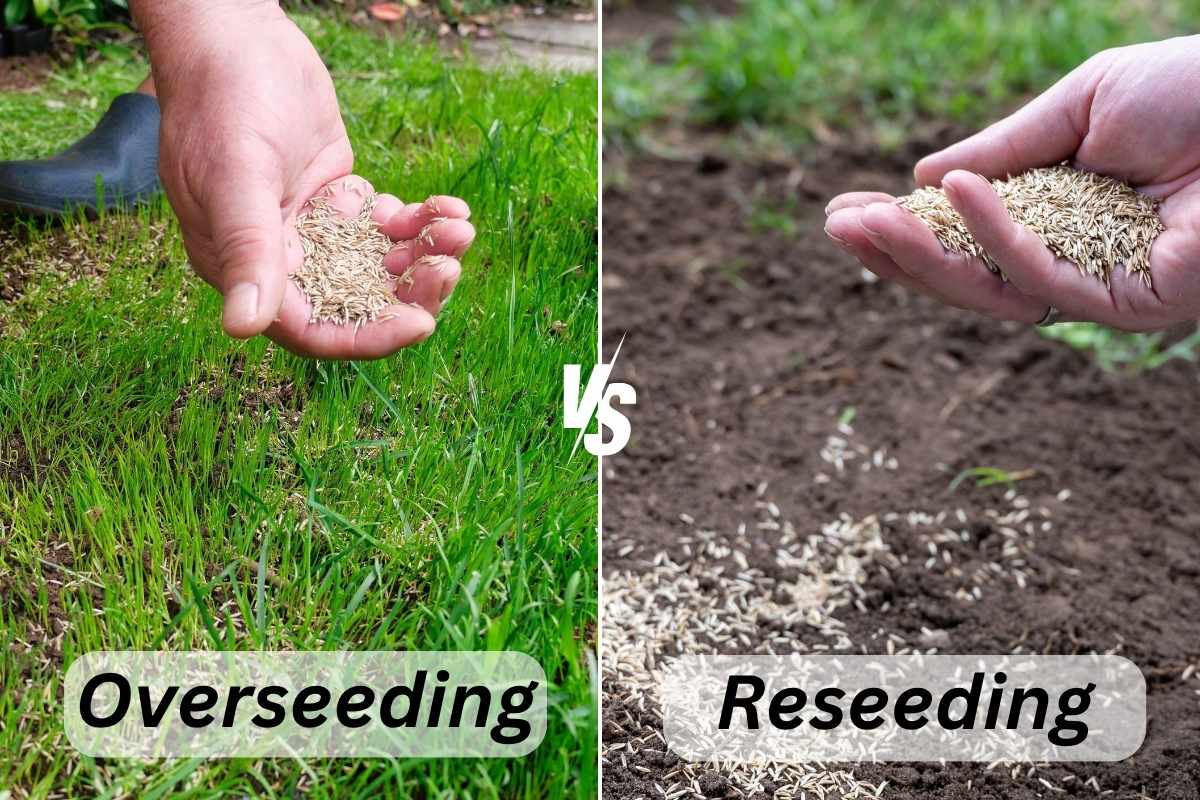
Credit: www.lawnstarter.com
Frequently Asked Questions
What Is The Best Grass Seed To Choke Out Weeds?
Tall fescue is an excellent grass seed to choke out weeds. It grows densely, preventing sunlight from reaching weed seeds. This shade blocks weed germination. Its deep roots also compete effectively with weeds for nutrients and water. Choose a high-quality blend for optimal results.
How Long Should I Kill Weeds Before Overseeding?
Kill weeds at least two weeks before overseeding. This ensures healthy seed growth and minimal competition. Use herbicides effectively and follow instructions for best results. Proper timing prevents weed interference and promotes lush lawns. Ensure the soil is ready for seeding after weed removal.
Can I Plant Grass Seed On Top Of Weeds?
Planting grass seed directly on weeds is not ideal. Remove weeds first to ensure healthy grass growth. Weeds compete for nutrients, hindering seed germination. Prepare the soil well, ensuring it’s clear and fertile. This approach enhances the grass’s chance to thrive and establishes a lush, weed-free lawn.
Should You Seed Or Kill Weeds First?
Kill weeds before seeding. Removing weeds ensures seeds get enough nutrients and sunlight for healthy growth. Prepping the soil by eliminating weeds helps prevent competition and enhances seed germination. Prioritize weed removal for a thriving lawn or garden.
Conclusion
Overseeding helps lawns grow thick and healthy. Thick grass often reduces weed growth naturally. It provides less space for weeds to grow. Strong grass competes well for sunlight and nutrients. This limits weed chances to thrive. Regular care enhances overseeding effects.
Mowing, watering, and feeding are crucial. Understanding overseeding benefits assists in weed control. Homeowners find overseeding a useful strategy. It fosters vibrant, weed-resistant lawns. Simplicity makes overseeding appealing to many. It’s a practical lawn care method. Try overseeding for greener, healthier grass.
Watch your lawn flourish while weeds decrease.

